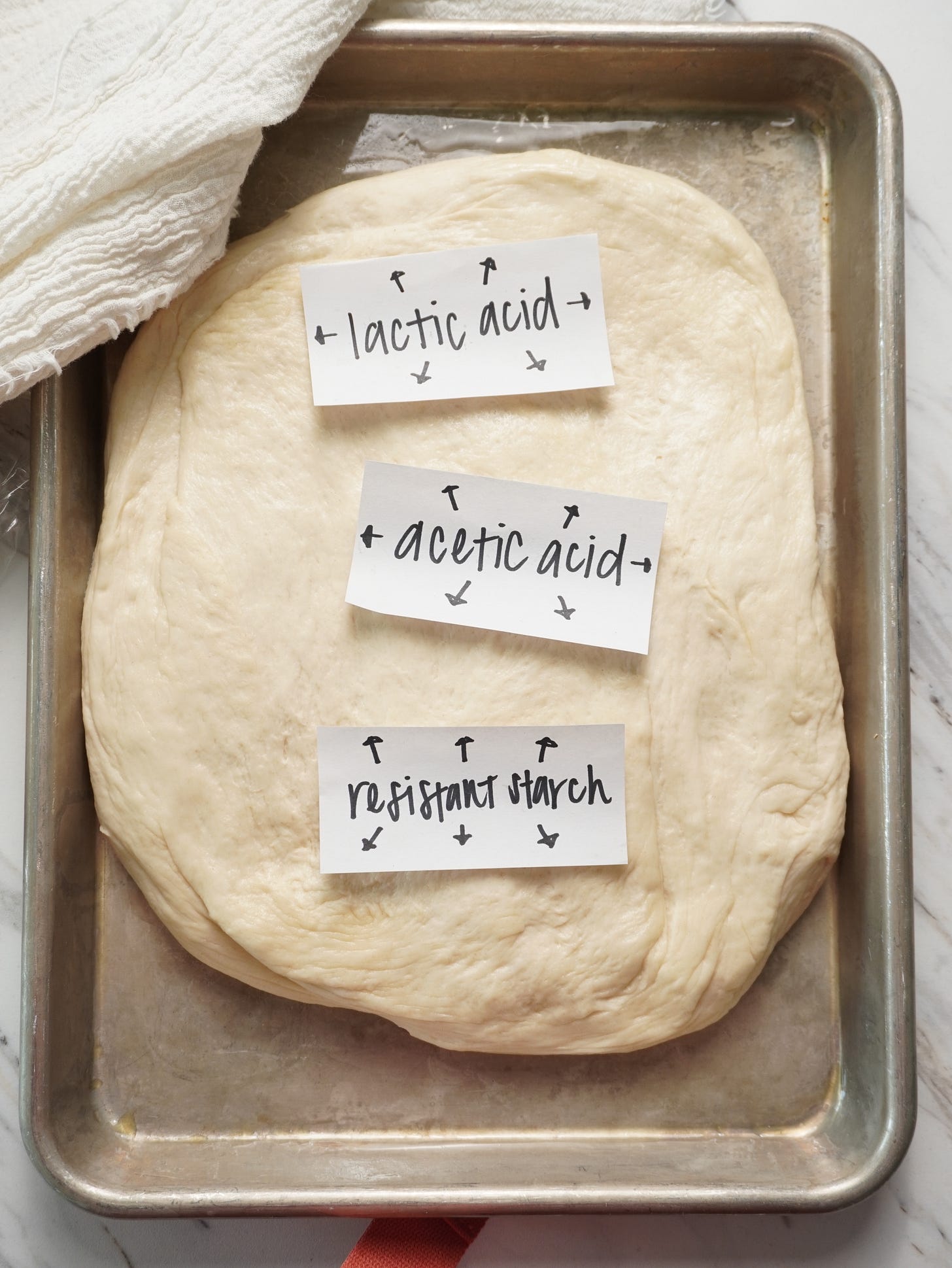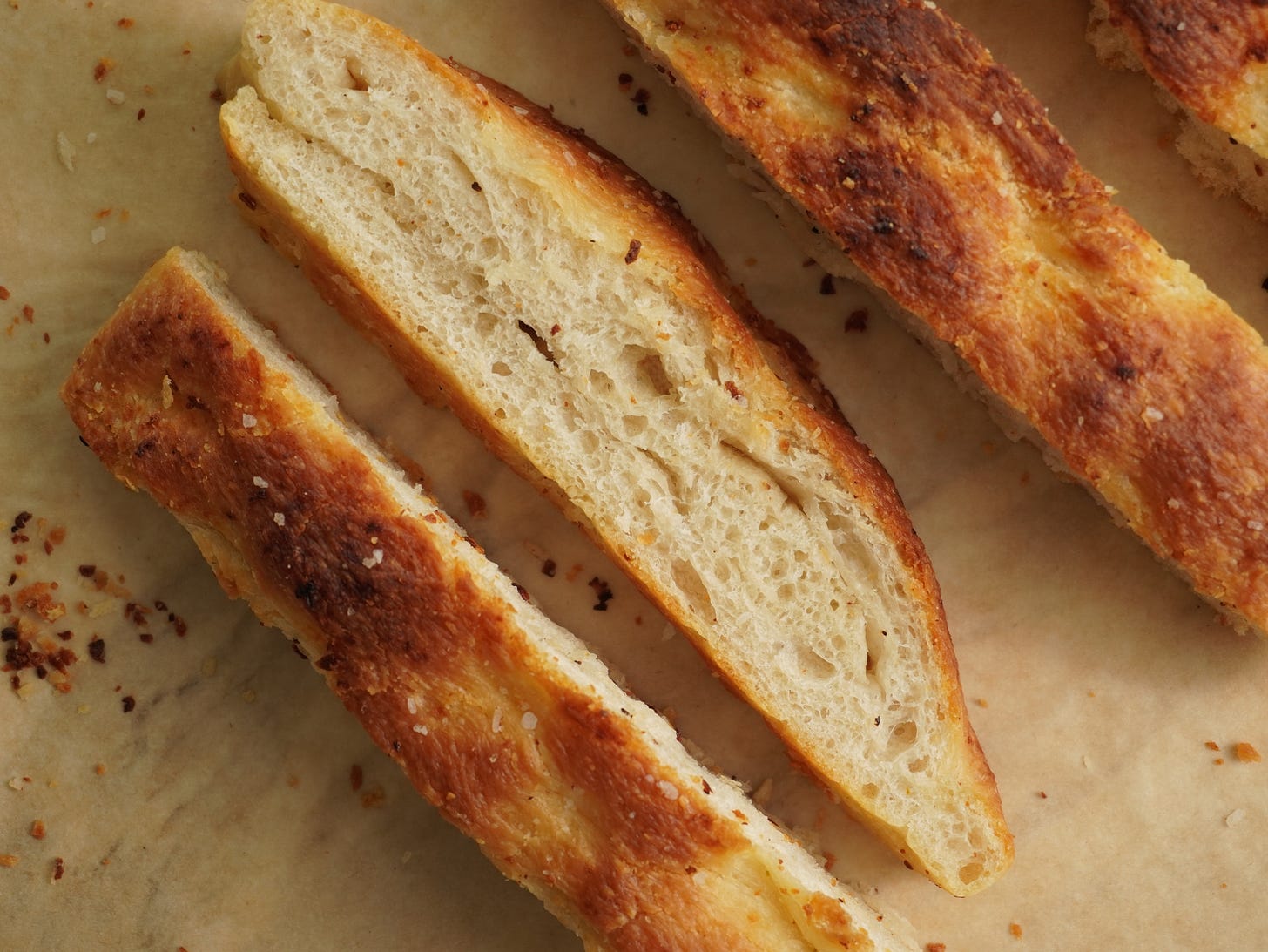science explained - why this bread is blood sugar friendly
insulin resistance and bread aren’t friends but sourdough changes things ;)
Today’s newsletter is available for free because everyone deserves to enjoy bread.
What if I told you there was a way to eat bread without worrying about the carb load and blood sugar effects?
As someone with insulin resistance, bread was one of the many foods that my doctor recommended to cut out of my diet entirely.
While I didn’t particularly love hearing that, I did recognize that eating bread was one of the biggest triggers for my glucose spikes.
If you’ve ever felt groggy, nauseous, and fatigued after eating a heavy sandwich or some bread and butter, you might just be having a high blood sugar moment </3
So hear me out - If you’ve ever felt this way or are simply just trying to prevent future disease, there is a type of bread that has proven to significantly reduce glucose spikes while still being insanely delicious.
It’s sourdough.in today’s newsletter we’re going to understand why sourdough bread is built different, how it works, and ways you can implement this hack into your everyday life.
BREAD’S TYPICAL GLUCOSE EFFECT
Traditional breads (think white, brioche, milk, etc.) have high amounts of carbs with little to no fiber.1
Without fiber, there is nothing that can slow down how quickly carbs get broken down and released as glucose (sugar) into your blood.2
A quick increase in your blood sugar levels leads to those unfriendly symptoms we mentioned earlier.
HOW SOURDOUGH IS BUILT DIFFERENT
If you have never binge-watched sourdough videos (highly recommend), making it is definitely a process.
The biggest differentiator between making sourdough versus regular bread is the use of a ‘sourdough starter’.
The starter is basically fermented dough full of (good) microorganisms that gets incorporated into sourdough baking and allows the bread to naturally rise3 — aka it’s um alive.


What you need to know: fermentation is our championship team.For the sake of baking bread, the two most important ‘things’ involved in fermentation are yeast and lactic acid bacteria4.
Yeast is, well, yeast - BUT lactic acid bacteria is our LeBron.
Lactic acid bacteria produces lactic acid and acetic acid.
Acetic Acid - slows down how quickly your stomach empties food into the small intestine.5
Because the small intestine is where your body breaks down carbohydrates into glucose and releases it into your bloodstream, your blood sugar won’t rise as quickly or as high (5).
Lactic acid - alters starch structure and turns some of the starch within the sourdough bread into resistant starch (5).
Resistant starch - one of the ways our star player gets the dub (LeBron’s assists, perhaps?)
Sourdough fermentation results in a large increase in the number of resistant starch within the bread.6
Resistant starch is a type of carbohydrate that is more difficult for our digestive enzymes to breakdown compared to traditional starch.7
Because some of the starch in sourdough is resistant starch, it takes longer for our body to digest the carbs into glucose and our blood sugar increases slowly over time as opposed to a rapid spike.
The Fermentation Process:
When making sourdough, the use of an active sourdough starter is absolutely necessary because it’s the source of fermentation.
The starter is a combination of water and flour that ferments over time and gets ‘fed’ periodically to keep it ‘alive’.
A portion of the starter is added to every batch of dough when making the bread. Ensuring the starter is ‘alive’ is what results in the fermentation championship team we talked about earlier.
I personally ordered a sourdough starter online so I could start using it almost immediately, rather than making it from scratch. Linked here
Making Your Own Sourdough Bread:
My favorite (and the easiest) way to make it at home is by making sourdough focaccia. You can find the recipe in this newsletter.
The most obvious way to incorporate sourdough into your diet is by using it as your choice of bread for sandwiches, toast, etc. This is easy because if you’re too lazy to make it (tbh same), you can just buy it.
Combining it with protein and fiber is the dream team for blood sugar <333
BUT the possibilities of baking with sourdough are endless
You can incorporate it into goods like muffins, pretzels, and crackers. This was pretty life changing for me because it means you can turn even some carb heavy pastries blood sugar friendly. :)





